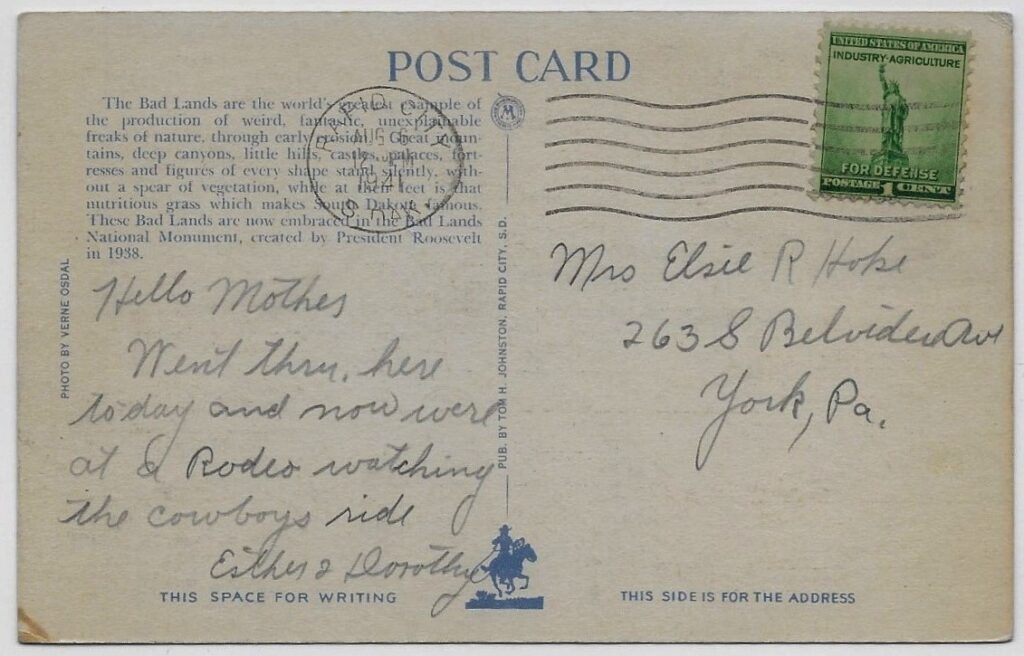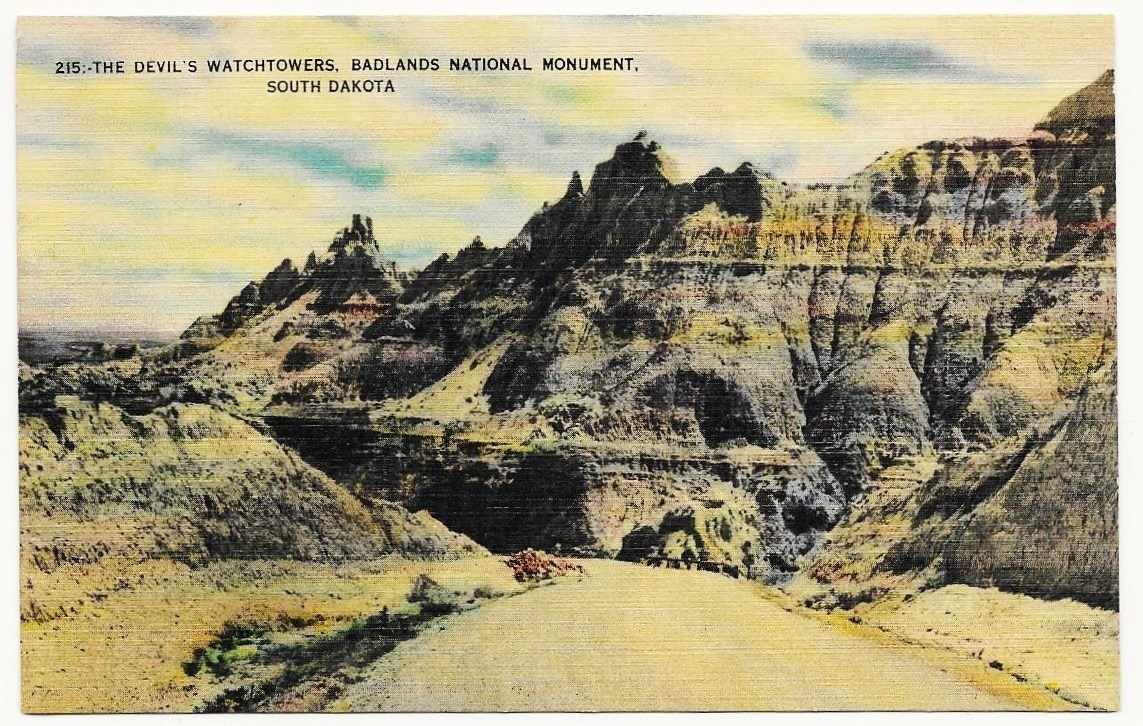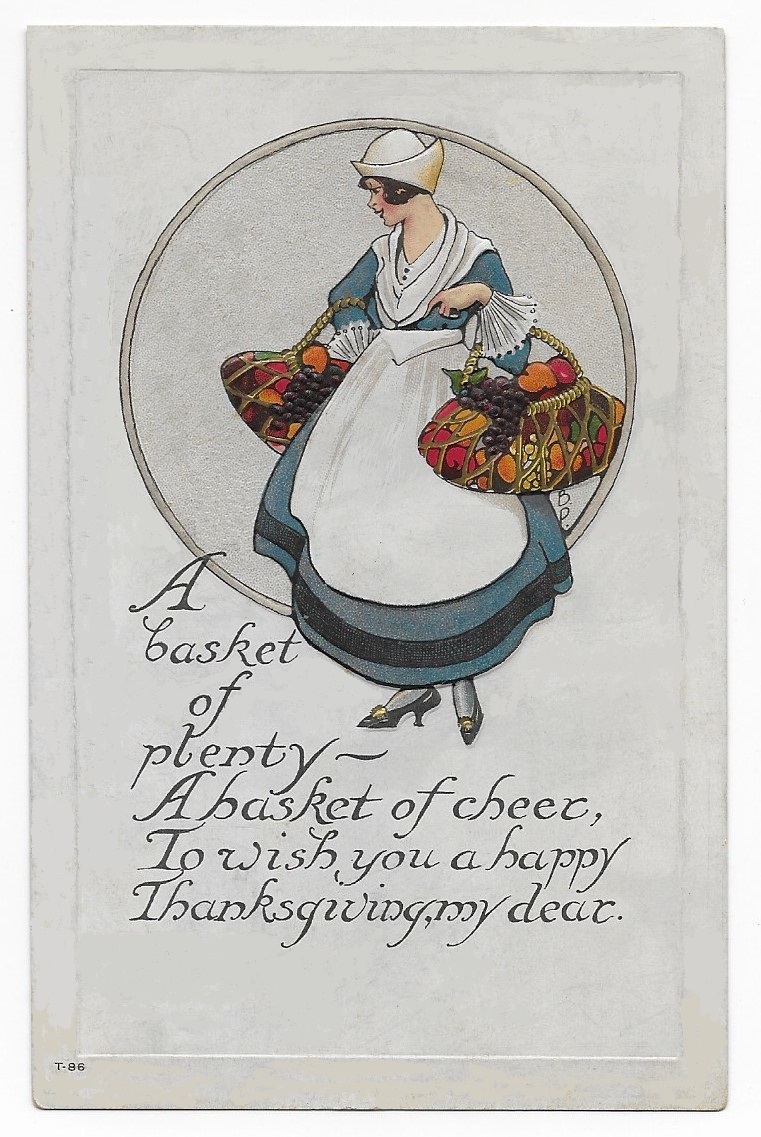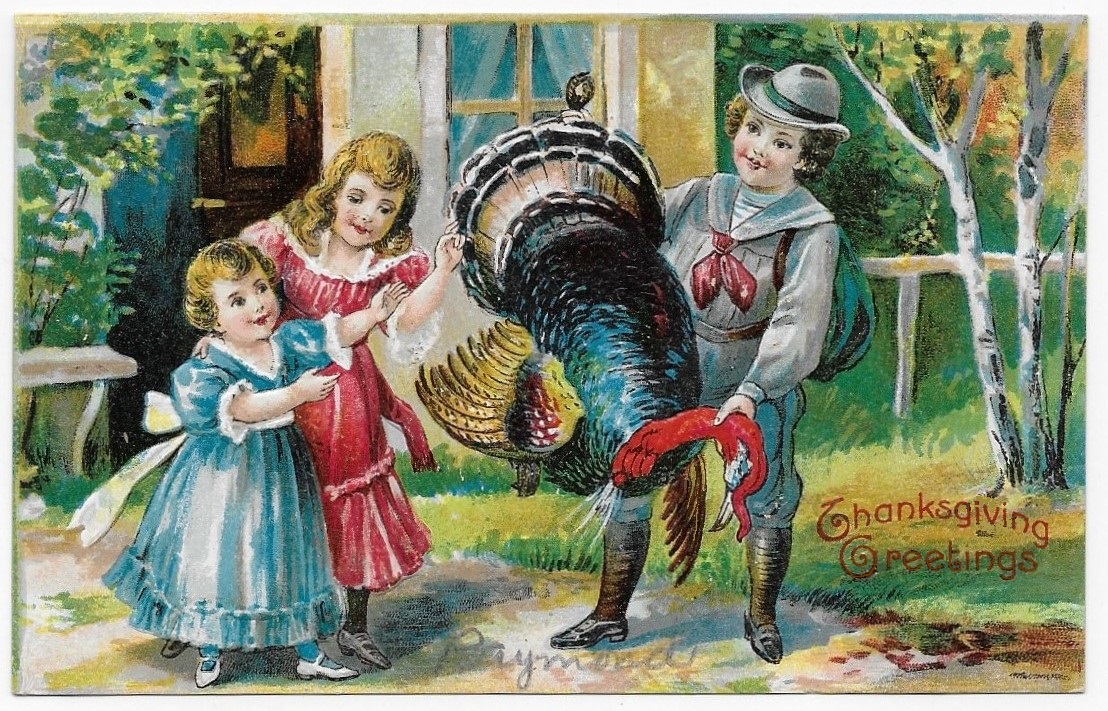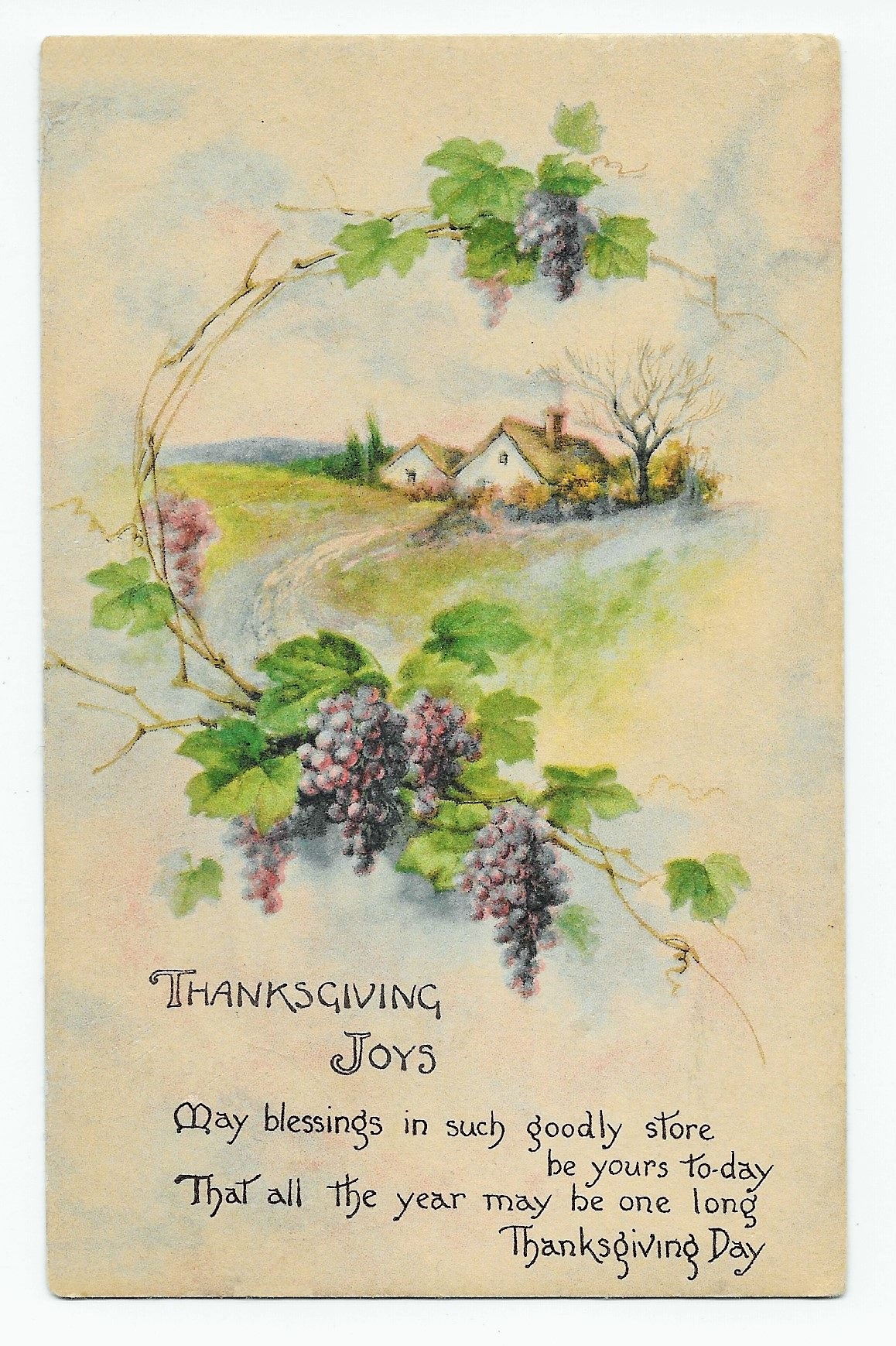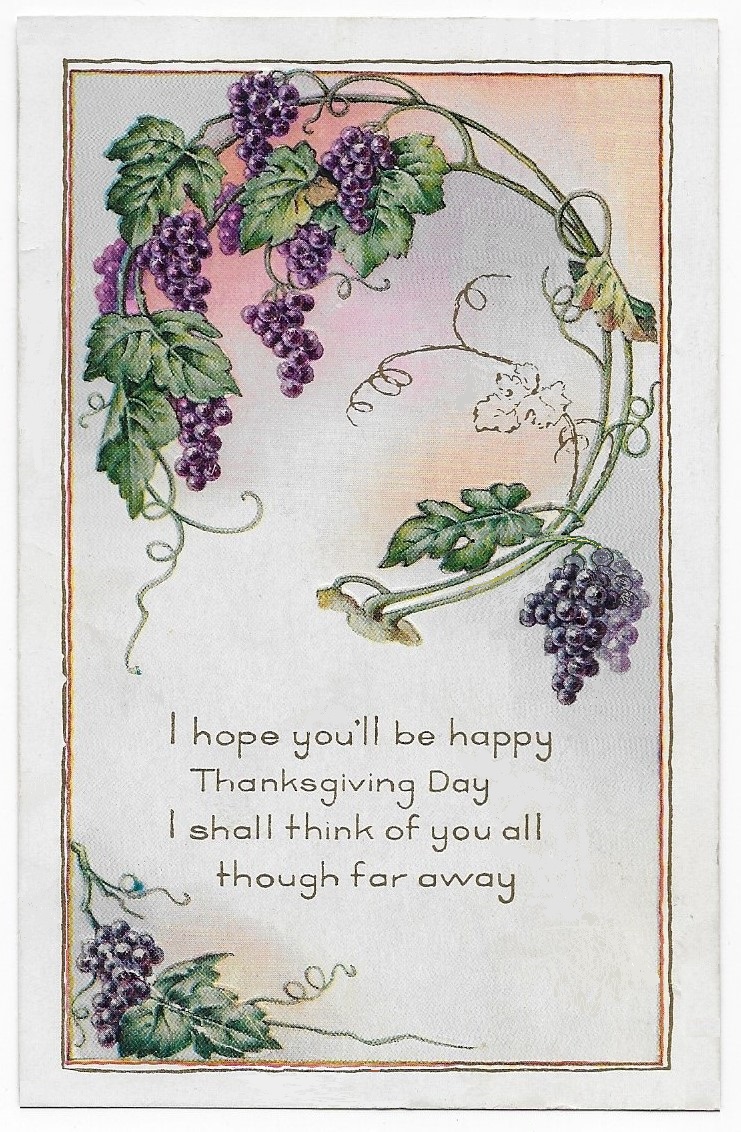Mrs. Elsie R. Hoke lived in York, the historic city on the Codorus Creek in south-central Pennsylvania.
https://en.wikipedia.org/wiki/York,_Pennsylvania
In August of 1941, Elsie received a postcard from her daughters, Esther and Dorothy.
The daughters mailed the greeting from Rapid City, the largest metropolitan area in southwest South Dakota.
https://en.wikipedia.org/wiki/Rapid_City,_South_Dakota
On the eastern edge of the Black Hills, along the Rapid Creek, Rapid Falls lies near the notorious “wild west” town of Deadwood.
https://en.wikipedia.org/wiki/Deadwood,_South_Dakota
Rapid City is northwest of the Badlands and northeast of the Black Hills.
The Black Hills, an area of steep, tree-covered slopes, and rushing streams is more photogenic than the weird and strange attractions of the Badlands.
We have seen postcard images of the Black Hills in other postcard stories:
“The Black Hills” (circa 1910) and “Fishing in the Black Hills” (1910)
+ + + + + +
The face of the postcard is a photograph of “The Devil’s Watch Towers” within the “Badlands National Monument” in South Dakota.
The Badlands is an area of sharply eroded buttes and pinnacles in southwest South Dakota.
https://en.wikipedia.org/wiki/Badlands
In 1868, this wilderness area (along with the Black Hills region to the west), was ceded to the Sioux peoples in perpetuity by the US government.
The subsequent discovery of gold in the Black Hills led to the abrogation of this treaty.by 1889.
President Theodore Roosevelt authorized the Badlands National Monument (of almost 380 square miles) in March of 1929.
Today, the Badlands National Park is administered in cooperation with the Oglala Lakota tribe.
The park protects the largest undisturbed mixed-grass prairie in the US and is home to a new colony of endangered black-footed ferrets.
The negotiated steps, reversals, and military appropriations related to the creation and renewal of the Badlands exceed the limit f a postcard story.
https://en.wikipedia.org/wiki/Badlands_National_Park
+ + + + + +
On the reverse, the message from Esther and Dorothy begins, “Hello Mother”.
They add, “Went thru here today and now we’re at a rodeo watching the cowboys ride”.
The postcard photograph is credited to Verne Odsdal; the postcard was published by Tom H. Johnston of Rapid City.
Elsie preserved the postcard in very good condition throughout her life.
One hopes that Esther and Dorothy enjoyed watching the cowboys and that they returned safely to their home,
